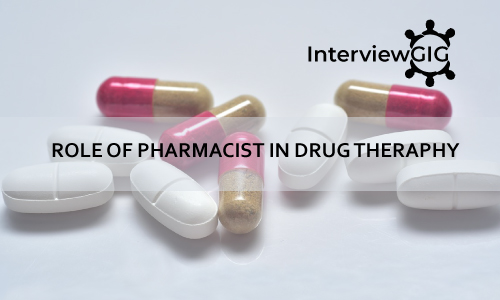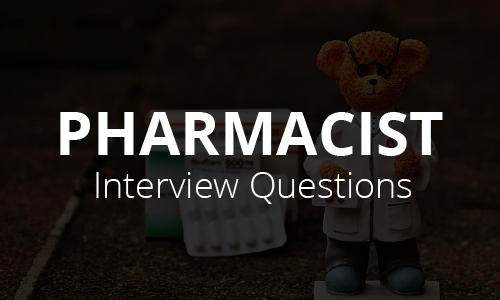Safety Officer Interview :Top-tier interview questions for entry-level and experienced Health, Safety, and Environment (HSE) officers or Safety Officers in 2024 to assess their suitability and expertise in ensuring workplace safety, risk mitigation, regulatory compliance, and emergency response.
What are the duties of Safety Officer?
A safety officer is responsible for ensuring the overall safety and well-being of employees and the workplace environment. Some of their key duties include:
Risk Assessment: Identifying and evaluating workplace hazards and potential risks.
Safety Policies: Developing and implementing safety policies and procedures.
Training: Providing safety training to employees and promoting awareness.
Inspections: Conducting regular inspections to identify safety violations or concerns.
Incident Investigation: Investigating accidents, incidents, and near-misses to determine causes and prevent recurrence.
Compliance: Ensuring compliance with safety regulations and standards.
Emergency Response: Developing emergency response plans and coordinating drills.
PPE: Recommending and ensuring proper use of personal protective equipment.
Hazard Communication: Communicating hazards and safety information to employees.
Reporting: Compiling and submitting safety reports to management and relevant authorities.
Continuous Improvement: Identifying areas for safety improvement and implementing corrective actions.
Collaboration: Working with different departments to address safety concerns.
Training Programs: Designing and delivering safety training programs for employees.
Documentation: Maintaining accurate records of safety-related activities and incidents.
Audits: Conducting safety audits to assess the effectiveness of safety programs.
What is an HSE policy?
An HSE (Health, Safety, and Environment) policy is a formal document that outlines an organization’s commitment to promoting and maintaining a safe, healthy, and environmentally responsible workplace. It establishes the company’s goals, objectives, and strategies for ensuring the well-being of employees and protecting the environment.
What is a near miss?
A near miss is an incident in which a hazardous event occurs, narrowly avoiding causing harm, injury, or damage. It serves as a warning and an opportunity to identify and address potential safety risks before they escalate into actual accidents.
What is accident, safety, hazard, incident, risk, injury?
Accident: An unplanned and undesirable event that results in harm, damage, or injury. Accidents are often caused by unsafe behaviours, conditions, or other factors.
Safety: The state of being protected from harm, danger, or risks. Safety measures and protocols aim to prevent accidents and promote well-being.
Hazard: A potential source of harm, danger, or adverse health effects. Hazards can be physical, chemical, biological, ergonomic, or psychosocial in nature.
Incident: An unexpected and often minor event that has the potential to lead to an accident, injury, or damage. Incidents highlight the need for preventive actions.
Risk: The likelihood or probability that a hazard will result in harm or damage. Risk assessment involves evaluating the potential consequences and taking measures to mitigate risks.
Injury: Physical harm or damage to the body resulting from an accident or hazardous situation. Injuries can range from minor cuts to severe disabilities.
What are the hazard precautions?
Hazard precautions involve specific steps to mitigate risks and ensure safety in various situations. Here are some key points to consider:
Identification: Identify potential hazards in the environment or task.
Assessment: Evaluate the severity and likelihood of each hazard.
Control Measures: Implement measures to reduce or eliminate hazards.
Engineering Controls: Use physical modifications like barriers, ventilation, or machine guards.
Administrative Controls: Develop safe work procedures, schedules, and training.
Personal Protective Equipment (PPE): Provide and ensure proper use of PPE as a last resort.
Training: Educate workers about hazards, precautions, and emergency procedures.
Communication: Clearly label hazards and communicate safety protocols.
Emergency Planning: Develop plans for emergencies and evacuation procedures.
Regular Inspections: Conduct routine checks to identify new hazards or weaknesses.
Feedback Mechanism: Encourage workers to report hazards promptly.
Continuous Improvement: Review and update precautions based on feedback and incident analysis.
What are the 5E's of accident prevention?
The “5E’s” of accident prevention are:
Engineering: Designing workplaces and processes to minimize hazards.
Education: Providing training and raising awareness about safety.
Enforcement: Enforcing safety rules and regulations.
Example: Leading by example to promote safe behaviours.
Evaluation: Continuously assessing and improving safety measures.
What are wet fire hydrants and dry hydrants? Provide a concise description of each.
Wet Fire Hydrant: A fire hydrant connected to a water supply (usually a water main) that is always pressurized and ready for immediate use by firefighting personnel.
Dry Hydrant: A non-pressurized pipe installed near a natural water source (like a pond or lake) to provide a water supply for firefighting. Water is drawn from the source when needed.
What are the different types of Scaffolds?
Scaffolds are temporary structures used in construction, maintenance, and repair projects to provide support, access, and safety for workers. There are several types of scaffolds, each designed for specific purposes and tailored to the requirements of the job. Here are some common types of scaffolds and their uses:
Supported Scaffolds:
- Single Scaffold:
- Double Scaffold (Independent or Birdcage Scaffold
- Cantilever Scaffold
Suspended Scaffolds:
- Single-Point Adjustable Scaffold
- Two-Point Adjustable Scaffold (Swing Stage
- Multi-Point Adjustable Scaffold
Rolling Scaffolds:
- Rolling Tower
- Mobile Scaffold.
Aerial Lifts:
- Scissor Lift
- Boom Lift
Specialized Scaffolds:
- Trestle Scaffold
- Crawling Boards
- Formwork
Can you provide information about confined spaces? explain what they are and their significance.
Confined spaces are areas with limited entry and exit points, making them challenging to enter and exit safely. These spaces can pose risks due to limited ventilation, potential for hazardous atmospheres, and difficulties in rescue operations. Significance lies in recognizing and managing these risks to ensure the safety of workers and responders. Proper training, equipment, and protocols are essential for working in confined spaces.
What is the purpose of a safety harness?
A safety harness is a protective equipment worn by individuals working at heights or in situations where there’s a risk of falling. It consists of straps, buckles, and attachments that secure the wearer to a sturdy anchor point. The harness prevents falls and minimizes the potential for injury by distributing forces across the body in the event of a fall. It’s an essential tool for ensuring worker safety in construction, maintenance, and other high-risk tasks.
What does JSA stand for, and what does it involve?
JSA stands for Job Safety Analysis. It’s a process that involves identifying potential hazards associated with a specific job or task, assessing the risks, and developing measures to mitigate those risks. This helps ensure worker safety and prevent accidents.
What is an exposure limit? Provide a concise explanation.
An exposure limit is a regulatory guideline that specifies the maximum allowable concentration of a hazardous substance in the air that a person can be exposed to without adverse health effects. These limits are established to ensure the safety and well-being of workers and the general population in various environments, such as workplaces, homes, and public spaces.
Explain the concepts of safety tag and safety policy?
Safety Tag: A physical tag attached to equipment or machinery to indicate that it’s unsafe to operate or requires maintenance, serving as a visual warning to workers.
Safety Policy: A written statement outlining an organization’s commitment to maintaining a safe and healthy work environment, along with the general principles and rules for achieving this goal.
Could you list some examples of toxic gases? Additionally, please provide a brief description of each gas and its potential dangers.
Toxic gases are hazardous substances that can be harmful or fatal when inhaled or exposed to in certain concentrations. Here are a few examples:
Carbon Monoxide (CO):
Description: Colorless, odorless gas produced by incomplete combustion of carbon-containing fuels.
Dangers: Binds to hemoglobin, reducing oxygen-carrying capacity of blood, leading to oxygen deprivation, headaches, dizziness, and even death.
Hydrogen Sulfide (H2S):
Description: Colorless gas with a distinct “rotten egg” odor, often found in oil and gas production.
Dangers: Causes respiratory irritation, headaches, loss of consciousness, and can be lethal in high concentrations.
Ammonia (NH3):
Description: Colorless gas with a pungent odor, commonly used in industrial processes.
Dangers: Irritates the eyes, throat, and respiratory system, and exposure to high concentrations can lead to respiratory failure.
Chlorine (Cl2):
Description: Greenish-yellow gas with a pungent odor, used in water treatment and chemical manufacturing.
Dangers: Damages lung tissue upon inhalation, leading to coughing, chest pain, and fluid accumulation in the lungs.
Sulfur Dioxide (SO2):
Description: Colorless gas with a pungent, suffocating odor, often produced by burning fossil fuels.
Dangers: Irritates the respiratory system, leading to coughing, shortness of breath, and exacerbation of pre-existing respiratory conditions.
Nitrogen Dioxide (NO2):
Description: Brownish gas with a sharp, acrid odor, a byproduct of combustion processes.
Dangers: Irritates the respiratory tract, exacerbates asthma, and contributes to respiratory illnesses.
What is a Shackle?
A shackle is a U-shaped metal device with a pin or bolt used to secure and connect various objects or components. It’s commonly used in lifting and rigging applications to join chains, ropes, or slings, allowing for safe and secure connections.
Could you provide information about different types of lifting equipment?
Various types of lifting equipment are used to move heavy loads in industrial and construction settings.
Some common types include:
- Cranes: Mobile cranes, tower cranes, overhead cranes, crawler cranes, etc.
- Forklifts
- Hoists: Chain hoists, wire rope hoists, electric hoists, manual hoists.
- Aerial Lifts: Scissor lifts, boom lifts, cherry pickers.
- Winches
- Jacks
- Conveyor Systems
What is a compressed gas cylinder?
A compressed gas cylinder is a sealed container designed to hold and store gases under pressure. These cylinders are commonly used to store and transport various gases, such as oxygen, nitrogen, helium, and acetylene, for industrial, medical, or laboratory applications. The pressure inside the cylinder allows the gas to be stored in a compact form, and the cylinders are color-coded and labeled to indicate the type of gas they contain. Proper handling, storage, and transport procedures are crucial to ensure the safety of working with compressed gas cylinders.
What is a flammable vapor?
A flammable vapor is a combustible gas or liquid in its gaseous state that can ignite and burn when exposed to an open flame, spark, or heat source. These vapors are highly reactive and can lead to fire or explosions in environments where the concentration of the vapor reaches its flammable limit. Proper ventilation, storage, and handling are critical to prevent accidental ignition and ensure safety.
What is the lockout-tagout procedure?
“Lockout-tagout” is a safety procedure used in industrial settings to prevent the accidental startup or release of energy from machinery or equipment during maintenance or repair. It involves physically locking the equipment’s power source and attaching a tag to indicate that the equipment is being serviced and should not be operated. This procedure helps protect workers from hazardous energy sources and ensures their safety while working on machinery.
What are the classes of fire?
Classes of fire categorize different types of fires based on the materials that are burning. There are five main classes:
Class A Fire:
Description: Involves ordinary combustible materials like wood, paper, cloth, and plastics.
Extinguishing Agent: Water, foam, or dry chemical extinguishers.
Class B Fire:
Description: Involves flammable liquids or gases like gasoline, oil, propane, and solvents.
Extinguishing Agent: Foam, dry chemical, or carbon dioxide extinguishers.
Class C Fire:
Description: Involves energized electrical equipment or wiring.
Extinguishing Agent: Dry chemical or carbon dioxide extinguishers (safe for use on electrical fires).
Class D Fire:
Description: Involves combustible metals like magnesium, titanium, or potassium.
Extinguishing Agent: Specialized dry powder extinguishers designed for specific metal fires.
Class K Fire:
Description: Involves cooking oils and fats in commercial kitchens.
Extinguishing Agent: Wet chemical extinguishers designed to cool and suppress cooking oil fires.
Each class of fire requires specific extinguishing agents to effectively control and extinguish the flames. It’s important to understand the fire class and use the appropriate extinguisher for the type of fire to ensure effective firefighting and safety.
Class A: Ordinary combustibles (wood, paper) – Use water or foam extinguishers.
Class B: Flammable liquids (gasoline, oil) – Use foam, dry chemical, or carbon dioxide extinguishers.
Class C: Energized electrical equipment – Use dry chemical or carbon dioxide extinguishers.
Class D: Combustible metals – Use specialized dry powder extinguishers.
Class K: Cooking oils and fats – Use wet chemical extinguishers.
What is IDLH?
IDLH stands for “Immediately Dangerous to Life or Health.” It refers to an atmospheric concentration of a substance that poses an immediate threat to life, would cause irreversible health effects, or would impair the ability to escape from a dangerous atmosphere. In the context of workplace safety and hazardous environments, the IDLH level is used to define conditions under which workers must use respiratory protection to prevent significant harm due to exposure.
What does HIRA stand for, and what does it involve?
HIRA stands for Hazard Identification and Risk Assessment. It’s a systematic process used to identify potential hazards, assess their risks, and implement measures to mitigate them. This process helps prevent accidents and injuries in various environments.
Can you explain the following terms briefly - HDD, Holiday Test, Hydro Test, HSE Plan, Checklist?
HDD (Horizontal Directional Drilling): A trenchless method used for installing underground utilities without disturbing the surface.
Holiday Test: A procedure to check the quality of protective coatings by detecting defects or discontinuities.
Hydro Test (Hydrostatic Test): Testing the strength and integrity of pipes or vessels by pressurizing them with water.
HSE Plan (Health, Safety, and Environment Plan): A documented strategy outlining how health, safety, and environmental risks will be managed in a project or workplace.
Checklist: A structured list of tasks or items to be completed, used to ensure thoroughness and consistency in processes.
What does TLV-TWA stand for in occupational safety? Provide a brief explanation.
“TLV-TWA” stands for “Threshold Limit Value – Time Weighted Average.” It refers to the maximum concentration of a hazardous substance in the air that a worker can be exposed to over an average workday (usually 8 hours) and a 40-hour workweek without experiencing adverse health effects. It’s a guideline used to assess and manage the potential risks associated with workplace exposure to various chemicals and substances.
How do you determine what protective gear you need?
To determine necessary protective gear, assess potential risks of the task. Identify potential hazards such as chemicals, sharp objects, or impacts. Research industry guidelines and regulations. Consider factors like required body coverage, respiratory protection, eye and ear protection. Prioritize safety, opting for gear that effectively mitigates identified risks.
What safety measures do you currently take?
In my role as a safety officer, I prioritize thorough risk assessments for all tasks. I ensure proper implementation of safety protocols, regular safety training for employees, and maintain up-to-date safety manuals. Regular inspections are conducted to identify and rectify potential hazards. Emergency response plans are in place, regularly practiced, and updated.
Personal protective equipment (PPE) requirements are strictly enforced. I also collaborate with cross-functional teams to address safety concerns, investigate incidents, and continuously improve safety standards. Open communication channels allow employees to report concerns promptly. Overall, my goal is to create a culture of safety and maintain a secure work environment.





